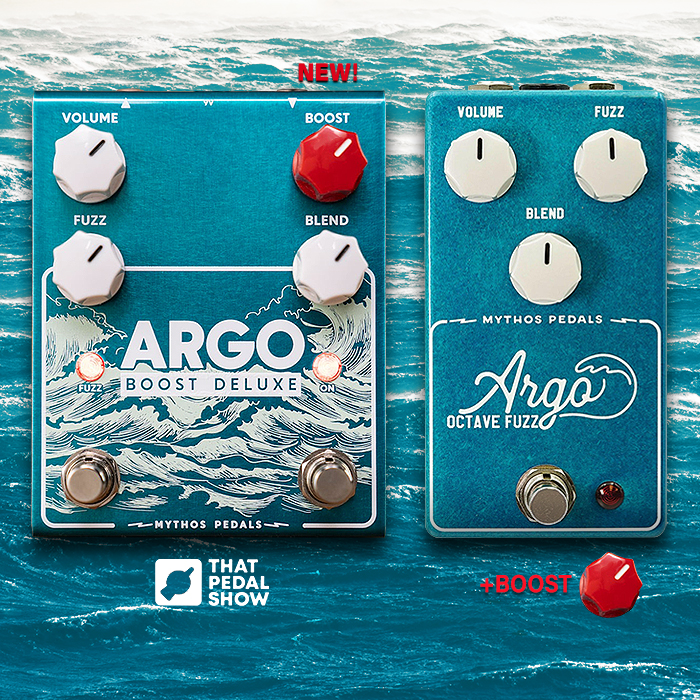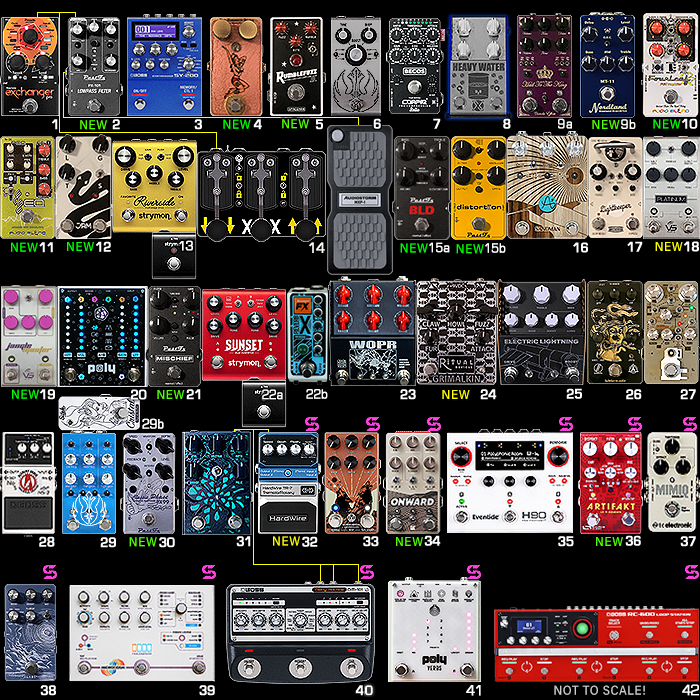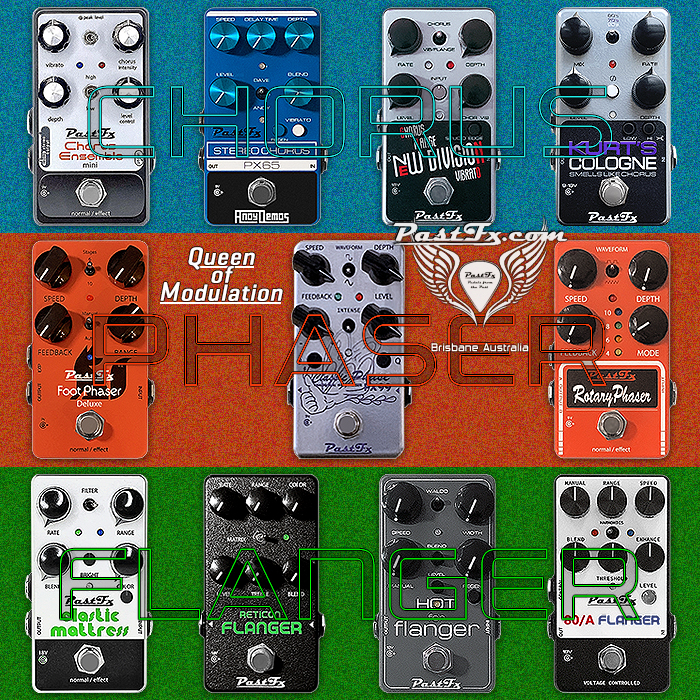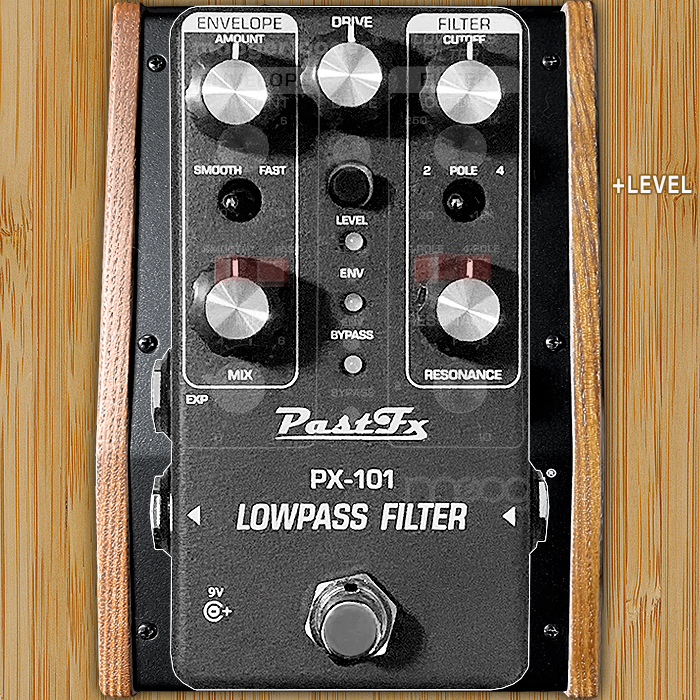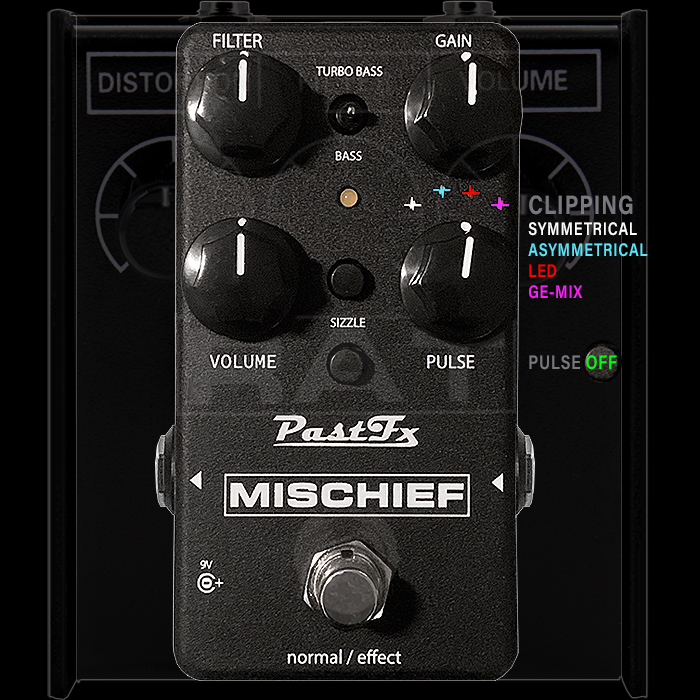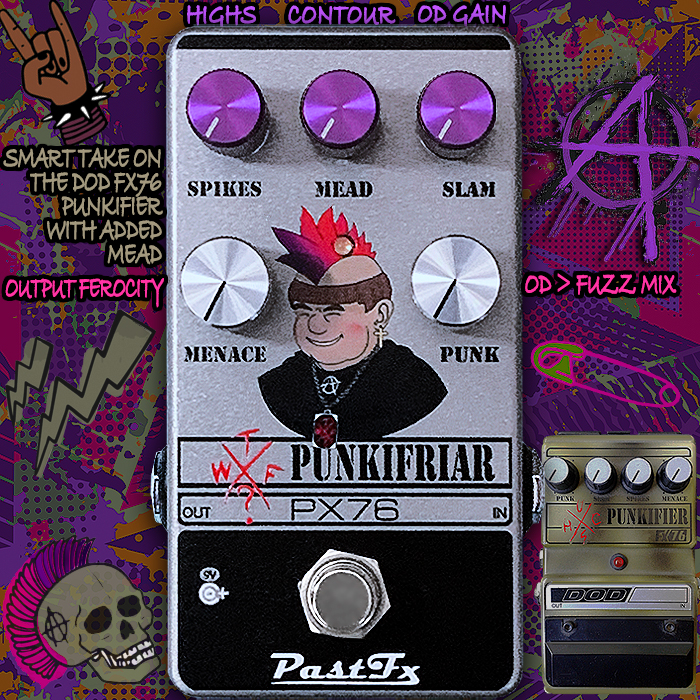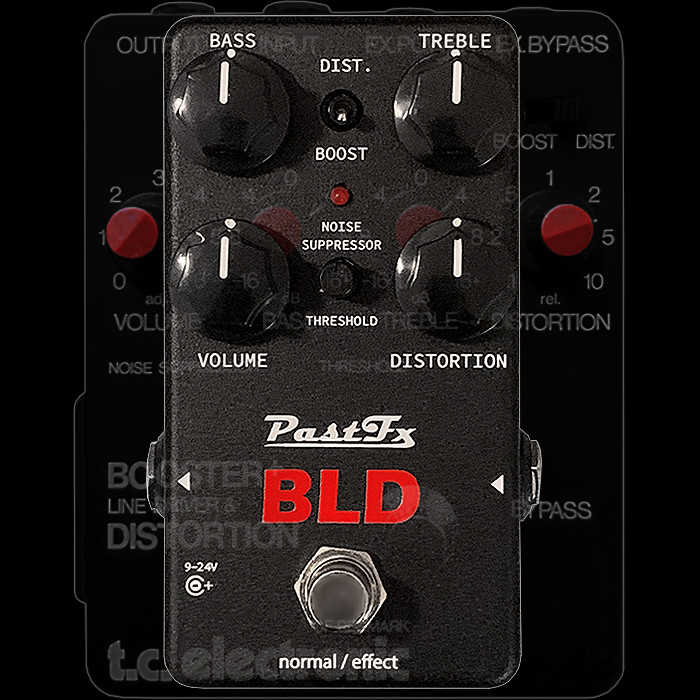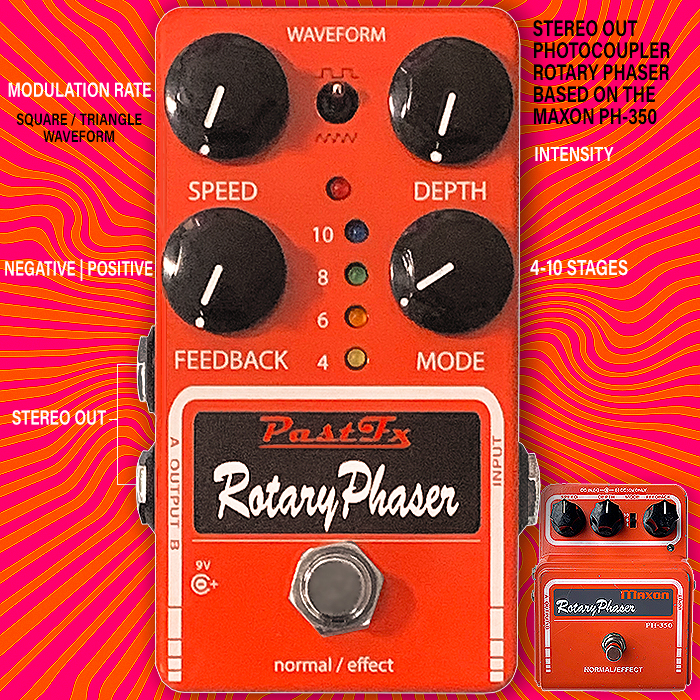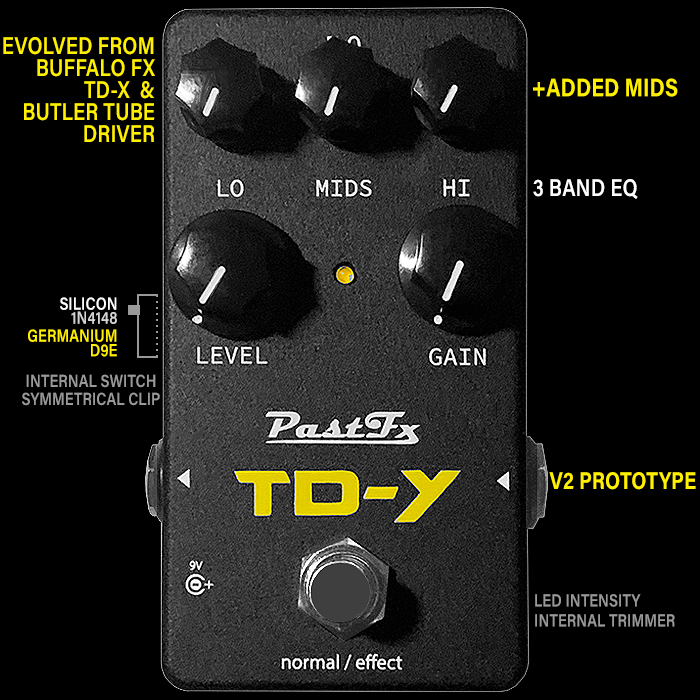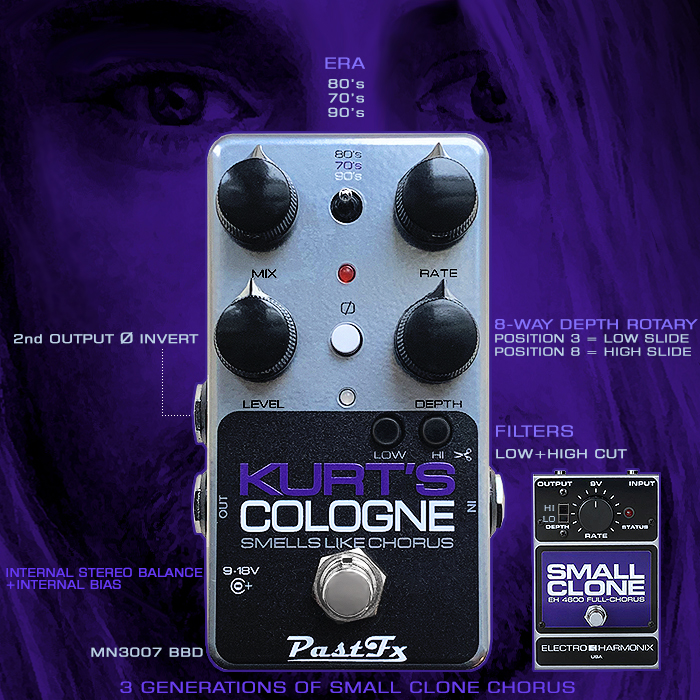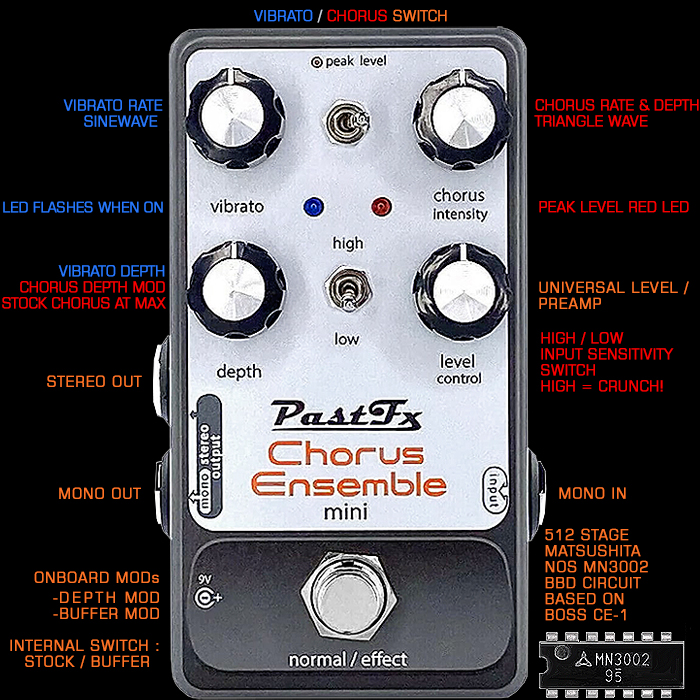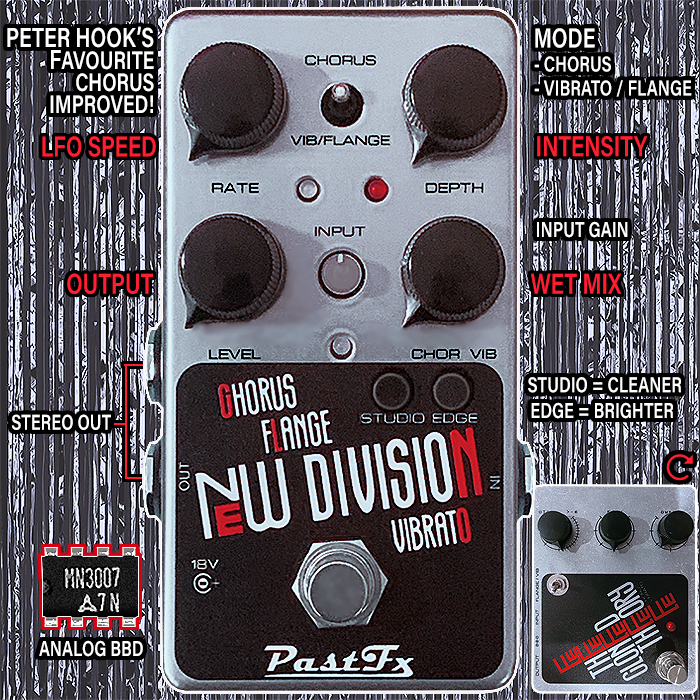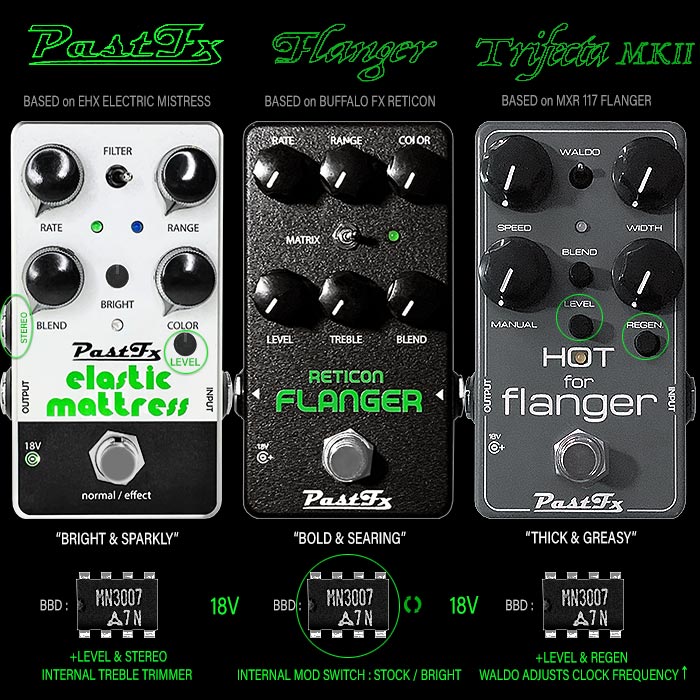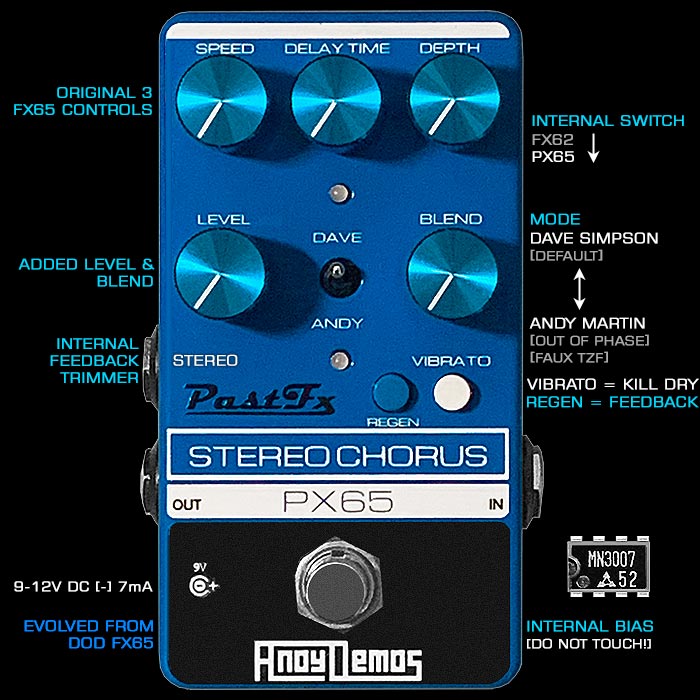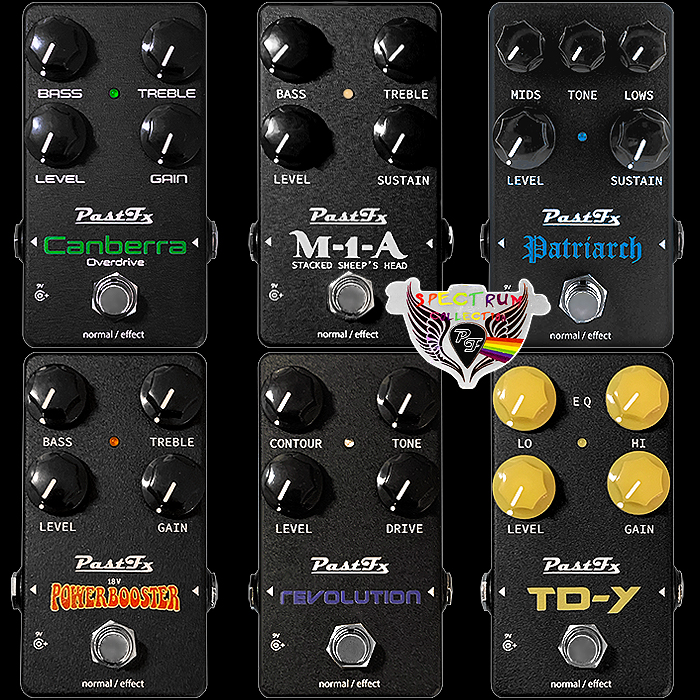PastFX revives and improves Billy Corgan's Siamese Dreams Secret Weapon - in the guise of the added features compact 'distortiion' pedal
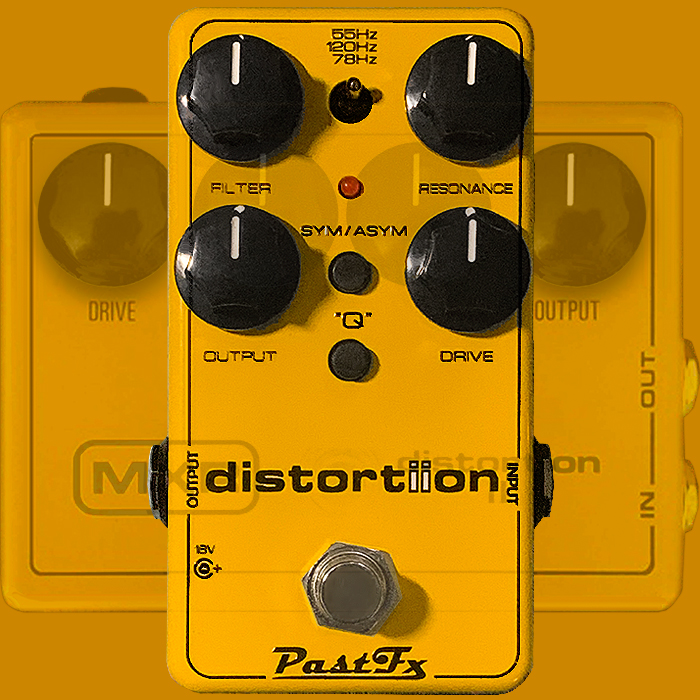
The source pedal for the ’distortiion’ - the long-since discontinued MXR Distortion II (1979-1984) has often been portrayed as THE essential companion pedal for Billy’s favourite OpAmp Big Muff - in order to deliver the Siamese Dream Lead tones. While the truth is a little more complex than that - as there are several additional pedals and indeed further studio effects that make up that essential sonic signature. There’s often a Phase 100 in the mix, with some tape delay and/or tape flanging, some degree of double-tracking, and for sharper tones there was also the EHX Micro Synth in addition.
Billy was/is all about blending, stacking and combining a number of different effects pedals into the front of his mostly JCM800 Amp then - which sometimes had EL34 Tubes, and at other times KT88’s. Billy was a huge fan of effects pedals and regularly mixed and swapped out a wide variety of pedals - indeed latterly using the Skreddy Echo and Strymon El Capistan pedals even for later rigs. What’s more there are often additional studio techniques and tricks in the mix for those celebrated Siamese Dream recordings. So while the distortiion + an IC / OpAmp Muff will get you most of the way - there is a lot more to that equation / signal chain!
The Distortion II / ’distortiion’ is generally much better as a combination pedal than a solo pedal on its own. It will beef up the front end of your amp really potently, and stacks well with a number of different overdrive and fuzz pedals - including of course Billy’s favourite Big Muffs.
Courtesy of the Resonance controls you can add a thunderous bottom end to any pedal or amp that follows in the chain. There are aspects of this pedal’s use that also call to mind Boss’s DS-1 from the same era - not at all in its sonic profile, but really in how it was designed to go into an amp with already some gain on the dial.
When I first got hold of the distortiion I struggled to dial it in initially, and for a time was almost convinced that the pedal could not really work solo into a Clean Pedal Platform Rig.
I feel that the distortiion is much more suitable generally for brighter and single coil pickups - while I was able to get to a pretty decent solo tone in the end - where I mostly got the best results when going into other gain pedals - including my favourite Bardic Audio 2-Stroke Beaver Opamp Muff, and the Treble Booster Channel of the Strymon Sunset - that obviously carved out a little more low-end for a better balanced output within my rig - it sounded fantastic actually!
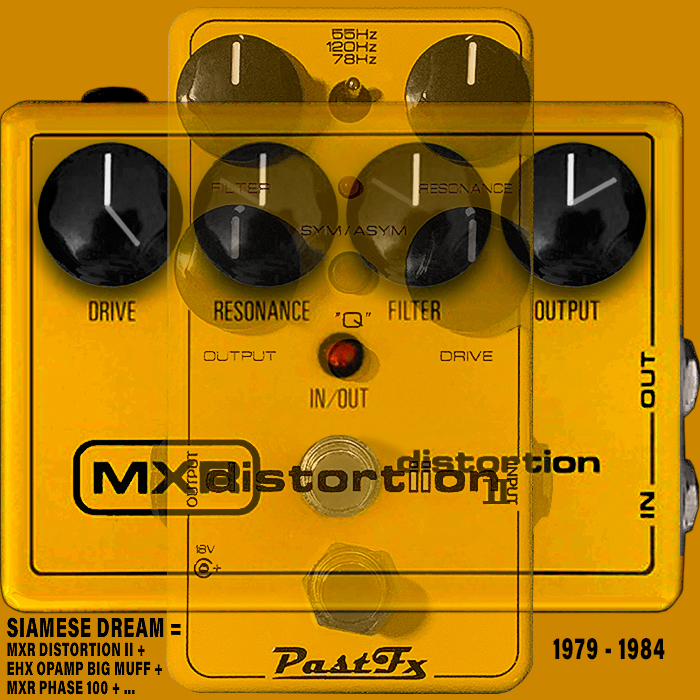
Controls - Filter (Highs), Resonant Frequency Hump / Centre Frequency : 55Hz / 120Hz / 78 Hz, Resonance (Lows), Output, Symmetrical / Asymmetrical Clipping Button, Drive, 'Q' Resonant Hump Smoothing.
NOTE - Power supply is 18V DC [-], with 55mA Current Draw
Getting a hang of the Resonance elements took the longest time here - as I extensively swept the Resonance dial back and forth for all 3 centre frequencies - 55Hz / 120Hz / 78 Hz and closely calibrated each impact point. I got really interesting results with the Resonance dialled all the way back, then @ 9 o'c, and finally @ Max. You get some really cool additional clipping when you crank the Resonance dial all the way up. For lots of applications though you only need a fairly minimal amount of Resonance.
The Filter Dial has some decent range too, while for my humbuckers that always sounded best @ Max, and also I generally prefer the Asymmetrical Clipping over the Symmetrical variety.
While this device can also deliver sort of cello-like tones on Symmetrical Clipping with the 'Q' Smoothing Button applied, and the Filter dialled down.
It certainly took me a while to dial in my perfect solo (meaning standalone) settings - and this is a very unique and distinct Boost/Drive. As I mentioned in the into - I feel that generally this pedal works best into other gain pedals or an already-cooking amp.
My Preferred stand-alone Settings - Filter @ Max, Resonance CF @ 120Hz, Resonance @ Max, Output @ Max, Asymmetrical Clipping, Q Smoothing Off, Drive @ 3 o'c.
Note that Billy Corgan's Distortion II settings (see second from bottom video below) - are Drive near Max, Resonance and Filter at 10 o'c, and Output @ 2 o'c. This really goes to show the unique nature of Billy's rig - as those settings did nothing for me, and they delivered a really unbalanced muffled and boomy output in my rig. So it really is a case of calibrating the pedal to your own setup - when it comes to Siamese Dream - everything in the chain matters!
This is a fantastic pedal for beefing up your output - while it does require some delicacy on the dial-in. It's quite a distinct Boost/Drive and takes a while to adjust to - its output always leans into the low-end somewhat - and can sound boomy with humbuckers if you don't apply it correctly. Probably an acquired taste for most. Obviously an essential if you're a Siamese Dream / Billy Corgan fan! Probably also more for brighter sounding guitars!
The distortiion is available to order from the PastFX Reverb.com Store - where it goes for $176 and equivalent; for those in Oceania and Asia Pacific - you can order from the PastFX Webstore - where it goes for $239 AUD.

Demos
















